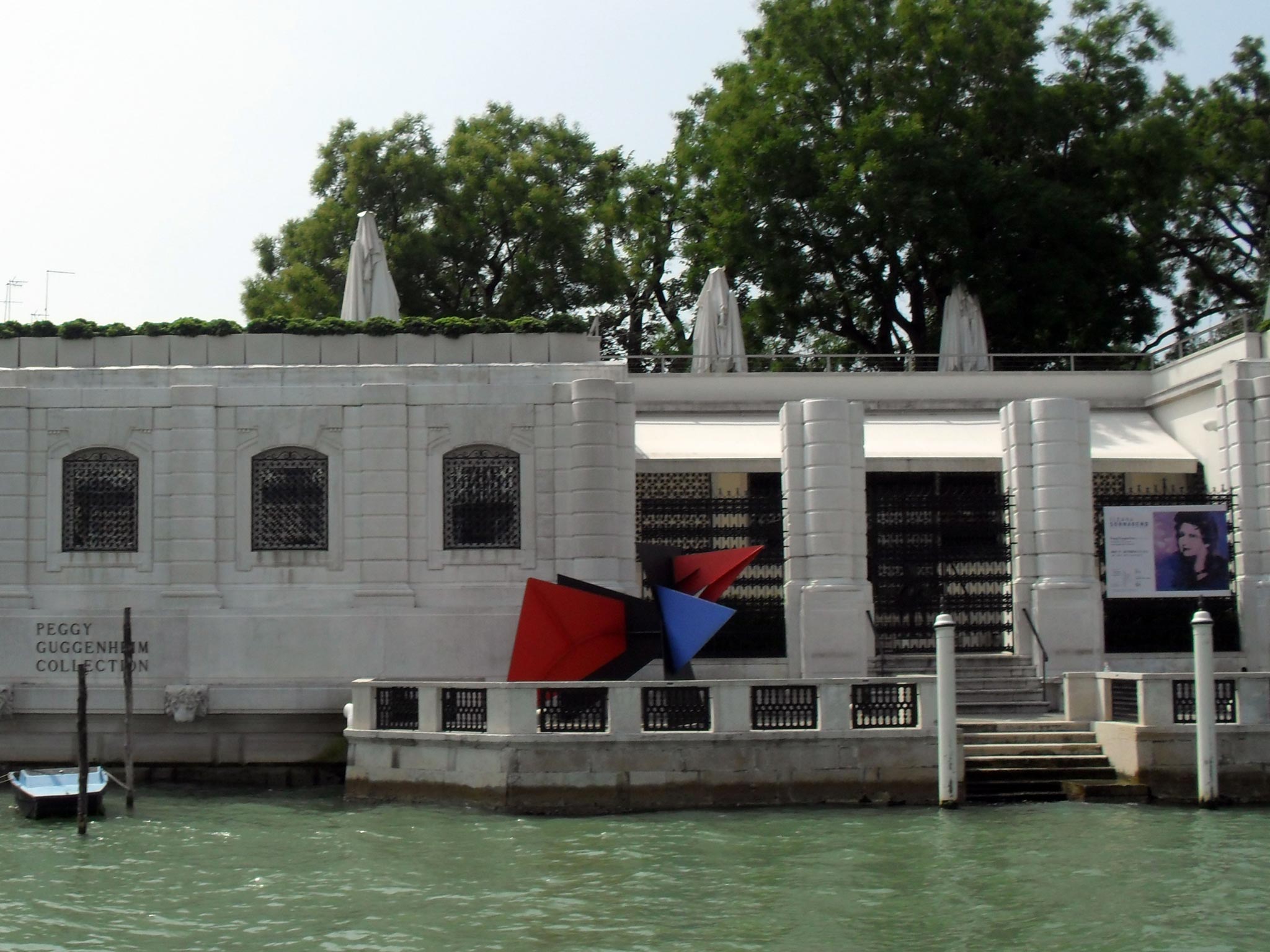Guggenheim v Guggenheim: Blood on the canvas as family sues foundation over legacy
Descendants of Peggy Guggenheim claim her collection - left to a Venetian palazzo - has been mishandled

Like any artistic dispute, it is a question of perspective. From one angle, it is just a family spat: Guggenheim v Guggenheim. Looked at another way, it is a quarrel which sprawls across the western art world.
The Guggenheim Foundation in New York is being sued in France by the Franco-British descendants of an eccentric American millionaire for the alleged mishandling of her art collection in Venice. As the Venetian palazzo at the heart of the dispute contains the tomb of Marguerite “Peggy” Guggenheim (and 14 of her dogs), the Solomon R Guggenheim Foundation in Manhattan is also being accused of desecrating her grave.
The dispute will be heard by the Tribunal de Grande Instance in Paris on 21 May. Why Paris? Like any good family quarrel, this one goes back a long way. The French judicial system declared itself competent to intervene when two “branches” of the Guggenheim family last fell out 22 years ago. Seven of Peggy Guggenheim’s Paris-based descendants have now asked the French courts to intervene again.
Ms Guggenheim, who died in 1979 aged 81, was a collector of husbands, lovers, dogs and modern art. Her husbands included the German painter Max Ernst, and her lovers – more than 1,000, it is claimed – included the Irish writer Samuel Beckett.
She left the palazzo Venier dei Leoni and her collection of 326 works of Cubist, Surrealist and abstract art to the New York foundation started by her uncle Solomon.
According to her Paris-based descendants, she bequeathed the palazzo and collection on the strict understanding that house and paintings would be kept together, without sales, loans or additions. They now accuse the Guggenheim Foundation of turning the palazzo into a common art gallery and placing the names of more recent benefactors, Rudolph and Hannelore Schulhof, on its external walls, visible from the Grand Canal. Last summer, they claim, of 181 works on display inside the palazzo, 75 came from the Schulhof collection.
They also allege that her burial site at the palazzo has been “desecrated” by being turned into a “sculpture garden” used for commercial cocktail parties. The garden, full of works collected by the Texan billionaires Patsy and Raymond Nasher, has been named “The Nasher Sculpture Garden”.
Sindbad Rumney, 27, Ms Guggenheim’s French great grandson and grandson of the British painter Ralph Rumney, said: “They are totally disrespecting my great grandmother’s legacy. Basically… if you have [enough] money and you have a collection, you can show it at the Peggy Guggenheim in Venice.”
His mother, the art writer Laurence Tacou, told Paris Match the Venice museum had become “an extraordinary cash machine” for The New York Guggenheim. She said Ms Guggenheim’s family hoped to prove that the New York foundation had abused Peggy’s bequest and an out-of-court settlement of the French law suit in 1992. They believed the foundation should be ordered to surrender control of the Venice collection to a new, non-profit-making committee.
The foundation says there was nothing specific about management of the collection in Peggy Guggenheim’s will. “[Our] efforts have only honoured, preserved and enhanced the memory and reputation of Peggy Guggenheim,” said Betsy Ennis, a Guggenheim spokeswoman.
Peggy was the daughter of the wealthy New York businessman Benjamin Guggenheim, who died when the Titanic sank in 1912. Despite years of quarrels with her uncle Solomon, she agreed in 1976 that his foundation could manage her collection after her death.
In a letter to the foundation, Ms Guggenheim insisted that the house and its contents – even her collection of ear-rings – must remain intact.
The sole exception to this rule was a bronze statue of a horse and well-endowed naked male rider which stood in front of her palazzo. Ms Guggenheim permitted the rider’s erect penis to be detached when religious processions passed on the Grand Canal.
Join our commenting forum
Join thought-provoking conversations, follow other Independent readers and see their replies
Comments